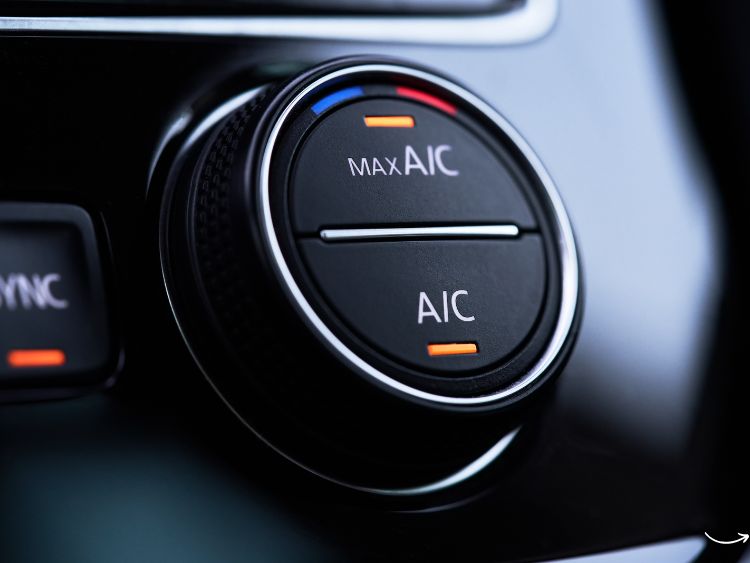Ever taken a summer drive in a classic car and felt like you were roasting inside a metal oven? If you’ve been there, you know the struggle is real. Classic cars are a slice of automotive history, bringing nostalgia, style, and an unmistakable charm. However, when it comes to comfort, especially in hot weather, they often leave much to be desired. This is where the importance of classic car air conditioning steps in.
Classic car enthusiasts face a unique challenge: how to modernize their beloved vehicles without sacrificing the originality that makes them so special. This article dives deep into the world of classic car air conditioning, exploring its evolution, the options available for upgrading, and tips for maintaining these systems. Whether you’re a die-hard car collector or someone just dipping their toes into the classic car scene, understanding the nuances of air conditioning in these timeless vehicles is crucial.
The Evolution of Classic Car Air Conditioning
Early Innovations and Milestones
Believe it or not, the concept of air conditioning in vehicles dates back to the 1930s. It was Packard who first introduced factory-installed air conditioning in 1939, calling it the “Weather Conditioner.” However, this early system was bulky, inefficient, and only accessible to the wealthiest car buyers.
Post-War Advances
The real breakthrough came after World War II, when technological advances made air conditioning more viable and affordable. By the 1950s, companies like General Motors and Chrysler were offering more refined systems, albeit still far from today’s standards. These early systems were often dealer-installed rather than factory-fitted, leading to variations in quality and performance.
The 1960s and 1970s: A Standard Feature
By the 1960s, air conditioning started to become a more common feature in luxury cars. Cadillac, for example, made significant strides in improving the efficiency and reliability of their systems. The 1970s saw air conditioning become more widespread, even appearing in mid-range and economy models.
Modern Retrofitting
Today, the challenge for classic car owners is retrofitting these vintage beauties with modern air conditioning systems. This task involves balancing the car’s original aesthetics with the convenience and reliability of contemporary technology.
Why Upgrade Your Classic Car Air Conditioning?
Comfort and Usability
Let’s face it: driving a classic car should be a pleasure, not a sweaty ordeal. Upgrading to a modern air conditioning system can transform your driving experience, making your vintage ride a joy to drive year-round.
Preservation of Interior
High temperatures can wreak havoc on your car’s interior, causing upholstery to fade and dashboards to crack. A good air conditioning system helps maintain a cooler, more stable environment, preserving your classic car’s interior for years to come.
Increased Value
A well-maintained classic car with modern amenities like air conditioning can command a higher price on the market. Potential buyers appreciate the blend of old-world charm and modern comfort, making your vehicle a more attractive investment.
Choosing the Right Air Conditioning System
Types of Systems
When it comes to retrofitting air conditioning in a classic car, you have several options:
- Factory-Style Systems: These are designed to mimic the original air conditioning systems that might have been installed in the car when it was new. They maintain the car’s original look but with improved performance and reliability.
- Custom Systems: These are tailored specifically to your car and your needs. They offer the best performance but can be more expensive and require more extensive modifications.
- Universal Systems: These can be installed in a wide range of vehicles and are often the most affordable option. However, they may require significant modifications to fit properly.
Key Considerations
- Compatibility: Ensure the system you choose is compatible with your vehicle’s make and model.
- Quality: Opt for reputable brands known for durability and performance.
- Installation: Professional installation is recommended to ensure optimal performance and to avoid damage to your vehicle.
Installation Process
Pre-Installation Checks
Before diving into the installation, it’s crucial to assess the current state of your vehicle. Check for any existing air conditioning components that might need to be removed or replaced. Evaluate the condition of your car’s electrical system, as a modern air conditioning system will place additional demands on it.
Step-by-Step Installation
- Planning and Preparation: Map out where the new components will be placed. This includes the compressor, condenser, evaporator, and any necessary hoses and wiring.
- Removing Old Components: Carefully remove any existing air conditioning components. If your car never had air conditioning, this step can be skipped.
- Mounting the Compressor: Install the compressor, usually driven by the car’s engine via a belt. This often requires custom brackets and precise alignment.
- Installing the Condenser: Mount the condenser in front of the radiator to ensure it receives adequate airflow.
- Fitting the Evaporator: The evaporator is typically installed inside the car, under the dashboard. This can be a complex process, especially in cars with limited space.
- Connecting Hoses and Wiring: Connect all necessary hoses and wiring, ensuring there are no leaks and that everything is properly insulated.
- Charging the System: Finally, the system needs to be charged with refrigerant. This step should be done by a professional to ensure safety and compliance with environmental regulations.
Maintaining Your Classic Car Air Conditioning
Regular Inspections
Regularly inspect your air conditioning system to catch any potential issues early. Look for signs of leaks, unusual noises, or decreased cooling performance.
Professional Servicing
Even if you’re a skilled DIY enthusiast, some tasks are best left to professionals. Regular servicing by a qualified technician can keep your system running smoothly and extend its lifespan.
Seasonal Maintenance
Before the start of summer, have your system checked and serviced to ensure it’s ready for the hotter months. This includes checking refrigerant levels, inspecting hoses and belts, and ensuring the condenser and evaporator are clean.
FAQs about Classic Car Air Conditioning
What’s the best air conditioning system for my classic car?
The best system depends on your specific vehicle, your budget, and your needs. Factory-style systems are great for preserving originality, while custom systems offer superior performance.
How much does it cost to install air conditioning in a classic car?
Costs can vary widely depending on the type of system and the complexity of the installation. Expect to spend anywhere from $1,500 to $4,000 or more.
Can I install the air conditioning system myself?
While it’s possible to install some systems yourself, professional installation is recommended to ensure optimal performance and to avoid damaging your vehicle.
How often should I service my classic car’s air conditioning system?
Regular servicing is recommended at least once a year, ideally before the summer season. This helps keep the system in good working order and extends its lifespan.
Summary
Classic car air conditioning is more than just a luxury; it’s a key component in preserving and enjoying these beautiful vehicles. From understanding the history and evolution of automotive air conditioning to choosing the right system and maintaining it properly, there’s a lot to consider. By upgrading your classic car with a modern air conditioning system, you not only enhance your driving comfort but also protect your investment and ensure your vehicle remains a joy to drive for years to come.



